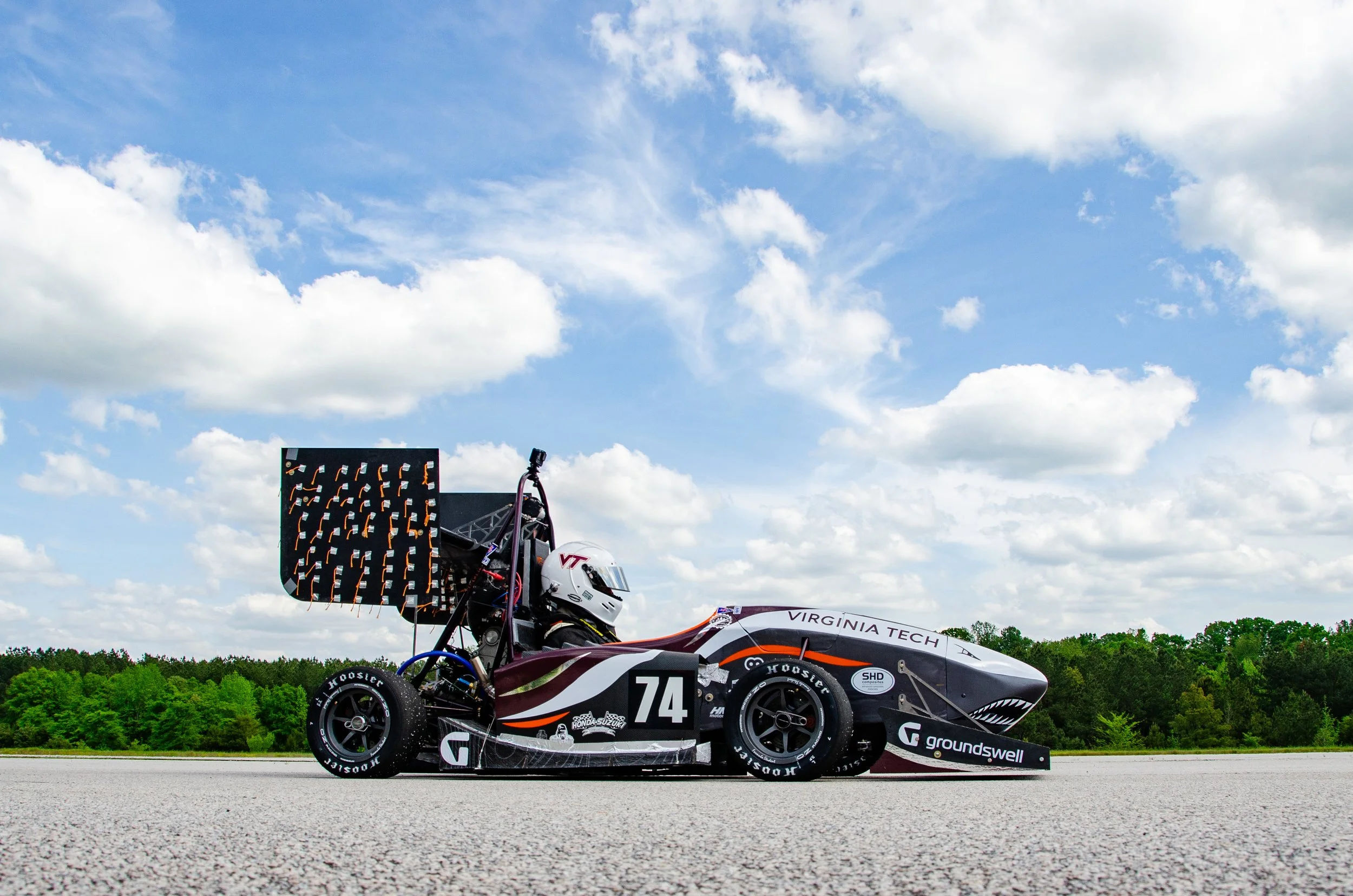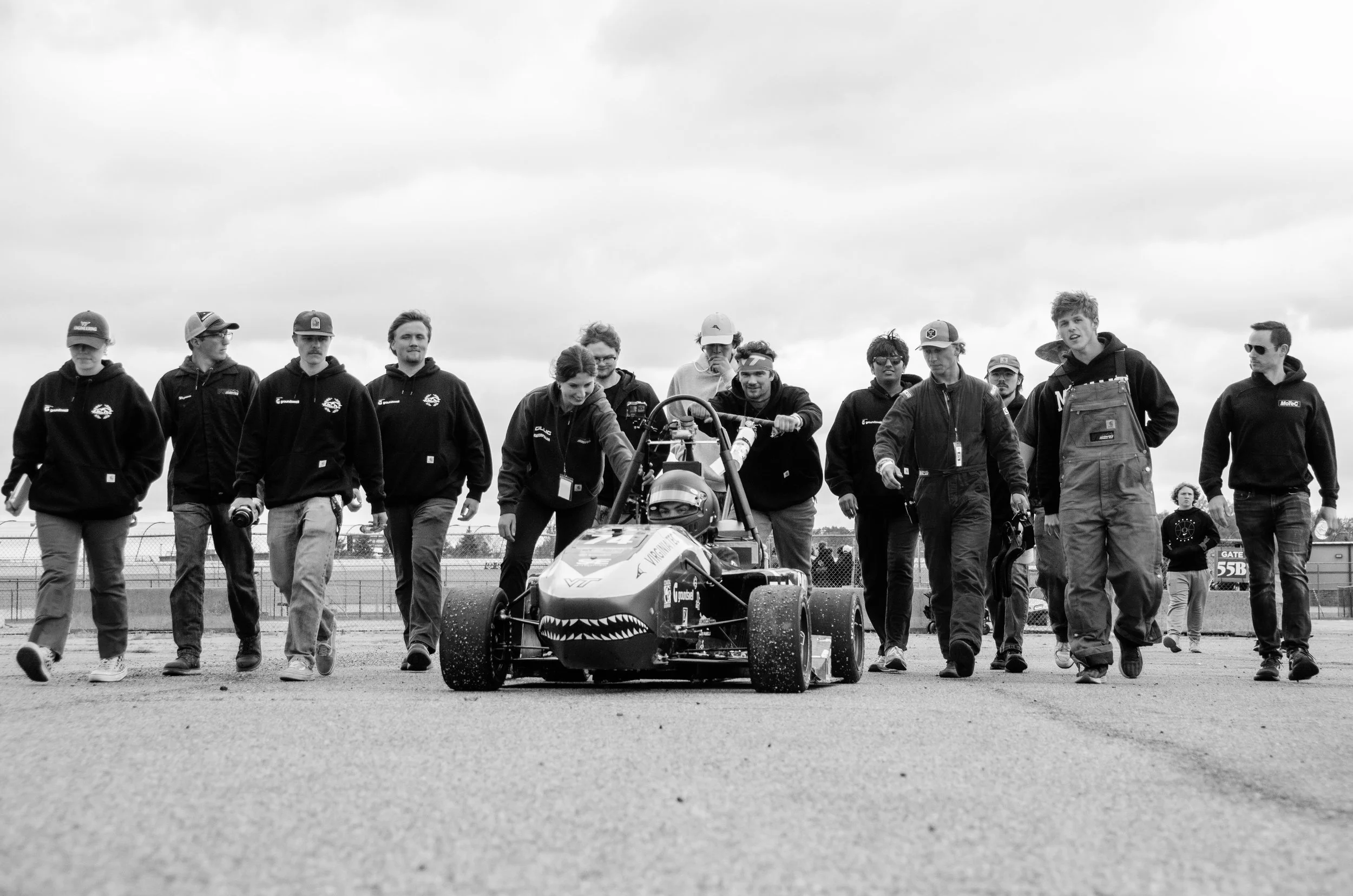Formula SAE
Virginia Tech Motorsports
LEarn about COmpetition
Design
BUIld
Compete
-
Team members design and spec every aspect of our cars—from carbon fiber monocoques to the smallest bolts. This process spans two years and teaches team members aspects of engineering design, analysis, and validation. Each year, alumni join team members to provide feedback on CAD models, FEA analysis and CFD simulation. Team members’ work spans sub-teams so that components properly interface with one another and to create a high performance race vehicle.
-
Parts are manufactured after completion of design validation. Team resources include a 5th axis mill, CNC lathes and mills, welders, and carbon composite tools. Our cars are made on-campus by team members with these and other resources provided by the Joseph “Joe” F. Ware, Jr. Advanced Engineering Lab. Each underclass-team member spends years learning from faculty and upperclassmen to ensure every part is made by a skilled hand.
-
Once every part has been manufactured and dynamometer tuning is complete, on-car testing begins. The best drivers are chosen to test the abilities of each car, provide feedback, and practice for competitions. Building upon the feedback of drivers, components are analyzed through on-track telemetry and data. Every aspect of a car needs to be tested before it can compete, and this process is what makes a good car great. It creates confidence in the car to compete against competition from other world-leading universities.
















